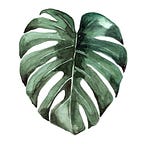Philodendron — How to care for them
The name philodendron is derived from the Greek words Philo (love) and dendron (tree). This classic plant is among the most popular houseplants and considered one of the easiest to grow.
Types of Philodendron
The two main types of philodendron houseplants are vining and non-climbing varieties.
- Vining philodendrons need a post or other supporting structure to climb on. These include blushing philodendrons and heartleaf philodendrons.
- Non-climbing philodendrons, such as lacy tree philodendrons and bird’s nest philodendrons, have an upright, spreading growth habit. The width of non-climbers can be as much as twice their height, so give them plenty of elbow room.
How To Care For A Philodendron Plant
Light
Philodendrons grow best in medium light and bright indirect sunlight. Older leaves turn yellow naturally. However, if you notice several yellow leaves at once, it could be an indicator that the plant is getting too much sun. They will tolerate low light, but if the stems become leggy with several inches between the leaves, you may need to move the plant to a brighter location.
Water
Water when the top inch of soil dries out. Take care not to overwater, since philodendron will rot if kept soggy. If the leaves are brown and falling off, the plant is likely not getting enough water. Droopy leaves can mean the plant is getting either too much or not enough water, but they should revive once you correct the issue.
Temperature
The ideal temperature for a philodendron is between 65–78°F during the day, and around 60°F at night.
Toxicity
Philodendron should not be consumed by animals or humans. Lacy tree philodendrons are toxic to cats and dogs. Being educated on poisonous plants can help you avoid any accidents all the while enjoying your greenery.
Pet & Problems
Philodendron is not prone to insects, but you may encounter aphids and mealybugs. You can wipe off mealybugs with cotton balls dipped in rubbing alcohol. Periodically showering the plant with water and applying insecticidal soap will help keep pests at bay.
Other tips: Philodendron are tropical plants, so higher humidity will promote lush growth and shiny foliage. It will tolerate lower humidity levels, but misting the plant regularly will help it thrive. Brown leaf tips usually indicate that the humidity level is too low.
